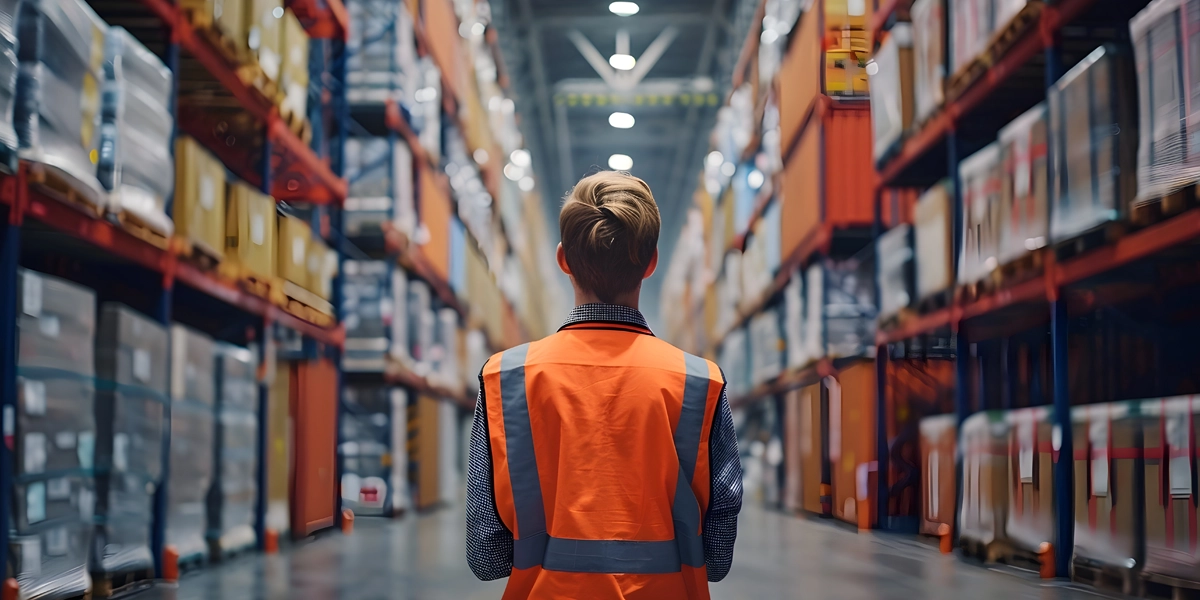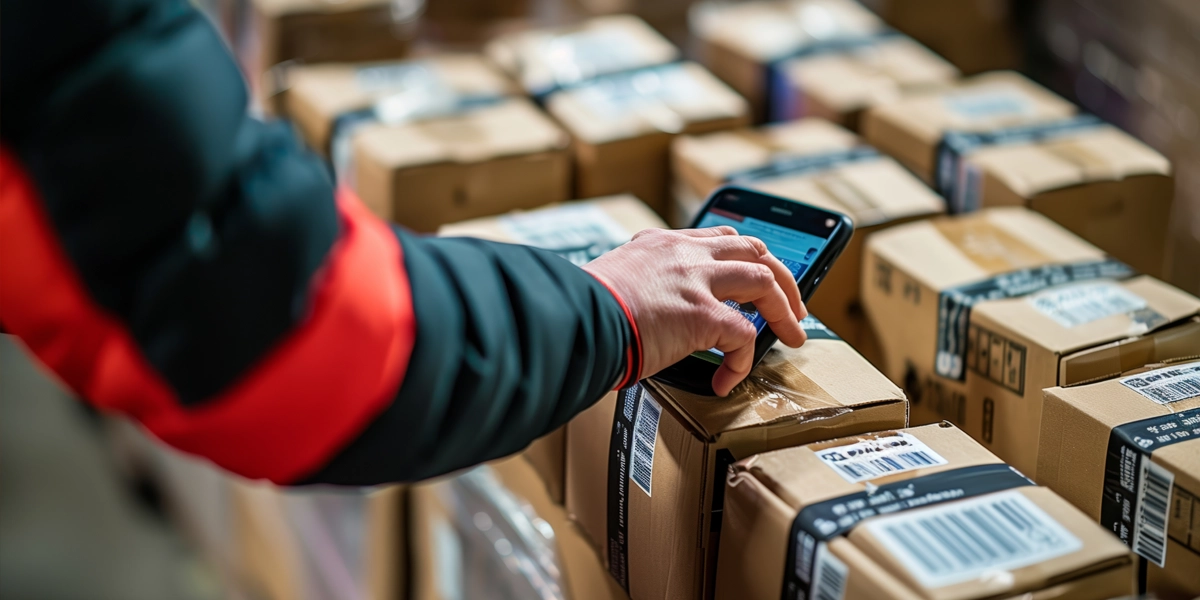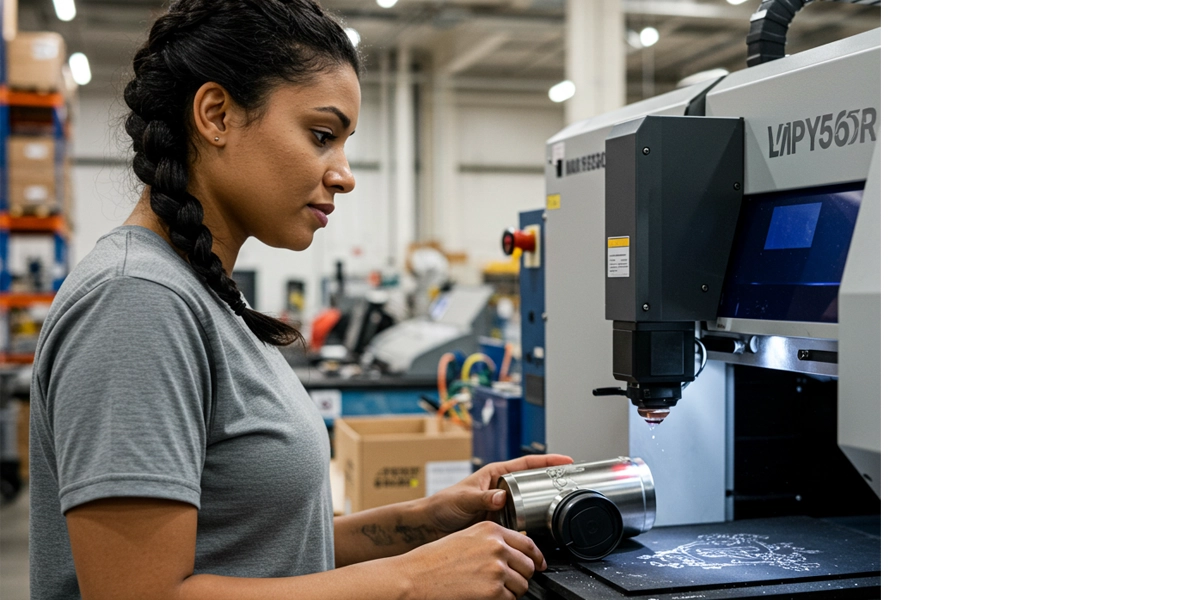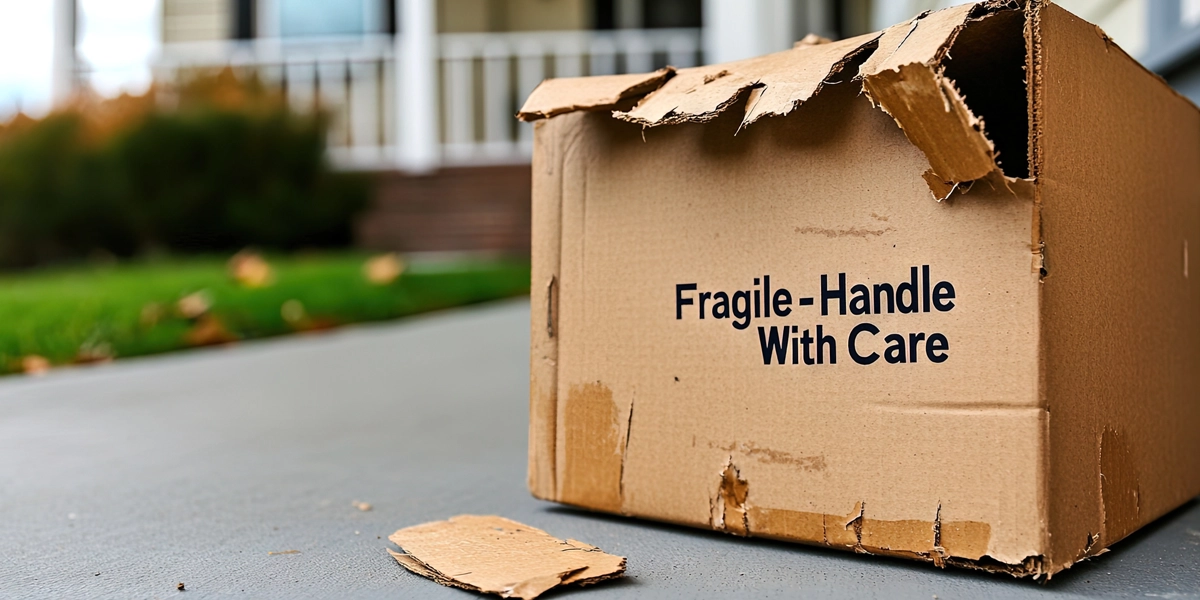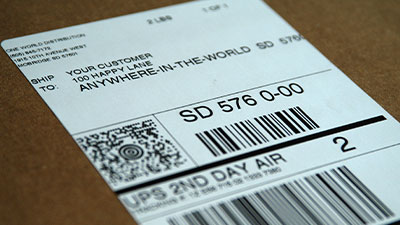In This Article:
Online shopping has become an essential part of modern life. With the click of a button, consumers can buy anything from groceries to electronics, enjoying unmatched convenience and choice. Technology has made this shift towards digital buying even faster, allowing for smooth transactions and personalized experiences.
But while ecommerce offers many advantages, it also brings significant environmental issues. The ease of online shopping often comes at a hidden cost to the planet. From excessive packaging waste to the carbon footprint of delivery systems, people are questioning how sustainable ecommerce is.
Understanding the impact on the environment is crucial. By addressing these problems, we can not only help reduce climate change but also encourage responsible consumer behavior and corporate practices. Let’s take a closer look at the negative aspects of ecommerce and we’ll discuss how we can find more sustainable solutions.
Why Should We Care About the Environmental Impact of Online Shopping?
While it’s easy to overlook, the environmental impact of online shopping is something that should concern all of us. Here’s why:
- Excessive Packaging Waste: One of the biggest issues with ecommerce is the amount of packaging used for each order. Products are often shipped in oversized boxes filled with plastic air pillows or Styrofoam peanuts for protection. This excessive packaging not only creates more waste but also requires additional resources like energy and water to produce. An EPA study in 2018 found that 30,000 tons of containers and packaging generated in the US went straight into landfills.
- Carbon Footprint of Delivery: Another significant environmental concern is the carbon emissions generated by delivery vehicles. With more people opting for online shopping, there has been a surge in delivery trucks on the roads, contributing to air pollution and greenhouse gas emissions.
- Return Rates: Online shopping also tends to have higher return rates compared to traditional brick-and-mortar stores. While convenient for consumers, this leads to additional transportation and packaging waste as products are sent back and forth.
- Energy Consumption: Data centers and warehouses supporting ecommerce operations require substantial energy to operate and maintain optimal conditions. This energy consumption contributes to overall carbon emissions and environmental strain.
- Product Overconsumption: The ease of online shopping can lead to impulsive buying behavior and excessive consumption. This “buy now, think later” mentality often results in unused or discarded items, adding to the global waste problem.
By understanding these environmental impacts, we can start making more informed choices as consumers and pushing for greener practices from ecommerce companies. For instance, addressing the issue of high return rates through better sizing information and detailed product descriptions can help minimize product transportation and packaging waste.
It’s crucial that we recognize the environmental impact of online shopping and work towards finding sustainable fulfillment solutions. As Lady Bird Johnson rightly said, “The environment is where we all meet; where all have a mutual interest; it is the one thing all of us share.”
The Environmental Impact of Online Shopping
The environmental impact of online shopping is a topic of growing concern, particularly in terms of CO2 emissions. When comparing traditional retail with ecommerce, there are significant differences in energy consumption and carbon emissions.
Traditional brick-and-mortar stores require energy for lighting, heating, cooling, and maintaining physical infrastructure. This energy usage contributes to a substantial carbon footprint.
On the other hand, online shopping relies heavily on logistics networks, warehouses, and data centers. While this eliminates the need for physical stores, the delivery process itself involves substantial fuel consumption and emissions.
However, it’s not just carbon emissions that pose a problem. The ecommerce industry also generates an alarming amount of plastic packaging waste. Unlike traditional retail where reusable bags are common, online purchases often arrive in multiple layers of plastic wrap, bubble wrap, and other non-recyclable materials. This leads to a significant increase in plastic waste that can take centuries to decompose.
Additionally, the high return rates associated with online shopping have a negative impact on sustainability. The ease of returning items leads to a cycle of additional shipping, repackaging, and sometimes even discarding returned products. This not only increases carbon emissions but also generates more waste from packaging materials.
To address these challenges and mitigate the environmental impact of online shopping, businesses should consider partnering with reputable third-party logistics (3PL) providers who can optimize supply chain efficiency and reduce emissions through better inventory management practices. Taking a proactive approach to improve warehouse picking speed and reduce picking and packing errors is not only better for the environment but will also help you reduce logistics costs. By understanding these impacts and taking proactive measures to minimize them, we can work towards a more sustainable future for the growing ecommerce sector.
Factors Contributing to Environmental Concerns in Online Shopping
1. Consumer Behavior: A Huge Footprint
Consumer behavior significantly influences the environmental footprint of online shopping. Impulse buying and overconsumption are primary drivers. The convenience of one-click purchases often leads to unnecessary orders, increasing packaging waste and transportation emissions.
2. Technological Advancements: Double-Edged Sword
Technology plays a dual role in ecommerce sustainability. On one hand, advanced logistics and route optimization reduce carbon footprints. On the other, the proliferation of fast shipping options encourages frequent, small-quantity orders, exacerbating environmental issues.
3. COVID-19 Pandemic: A Surge in Online Shopping
The COVID-19 pandemic accelerated the shift to online shopping, compounding environmental challenges. Lockdowns led to a surge in ecommerce activities, amplifying waste from packaging and returns. While the pandemic highlighted the convenience of online shopping, it also underscored the urgent need for sustainable practices.
The Responsibility of Ecommerce Giants in Promoting Environmental Sustainability
Evaluation of Environmental Practices
Amazon, Alibaba, and Walmart play significant roles in the ecommerce industry, and it’s important to closely examine their environmental practices. Here’s what each of these giants is doing:
- Amazon: The company has made a commitment called the Climate Pledge to achieve net-zero carbon emissions by 2040. They plan to achieve this through investments in renewable energy sources and the use of electric delivery vehicles.
- Alibaba: They have launched an initiative called Alibaba Green Logistics 2021 with the goal of reducing carbon emissions in their logistics network.
- Walmart: Their initiative, known as Project Gigaton, aims to eliminate one billion metric tons of greenhouse gases from their global supply chain by 2030.
These initiatives are part of a larger trend where ecommerce giants are acknowledging their responsibility to address environmental issues.
Influence of Global Supply Chains
Global supply chains are crucial for the functioning of ecommerce businesses, but they also contribute significantly to carbon emissions. Some key factors that contribute to the carbon footprint include:
- Emissions from transportation
- Energy-intensive warehousing practices
- Excessive packaging
To tackle these issues, it is essential to optimize supply chain management. One example of such efforts is Amazon’s Shipment Zero program, which aims to make 50% of all shipments net-zero carbon by 2030.
The complexity of global supply chains requires innovative solutions. One strategy is to form strategic partnerships with third-party logistics providers (3PLs) to streamline operations and improve sustainability. Read more about how third-party logistics (3PL) works to discover ways your business can become more eco-friendly.
Incorporating Sustainable Practices
It’s not just about reducing carbon emissions; ecommerce companies also need to prioritize sustainable practices in other areas. This approach serves two purposes:
- Addressing environmental concerns
- Meeting the increasing consumer demand for eco-friendly options
Here are some ways ecommerce companies can incorporate sustainable practices:
- Packaging: Opt for eco-friendly materials and minimize waste by using appropriate packaging sizes.
- Renewable Energy: Switch to renewable energy sources like solar or wind power for warehouses and offices.
- Efficient Transportation: Implement optimized route planning, use electric vehicles, and explore alternative last-mile delivery options like bike couriers or drones.
- Product Sourcing: Work with suppliers who follow sustainable practices and prioritize products made from recycled or organic materials.
- Recycling Programs: Establish programs to encourage customers to recycle packaging materials and offer incentives for returning used products.
By adopting these measures, ecommerce companies can reduce their environmental impact while also attracting eco-conscious consumers.
Taking a Holistic Approach
To truly promote environmental sustainability in ecommerce, we need to:
- Evaluate the environmental practices of major players like Amazon, Alibaba, and Walmart
- Understand the impact of global supply chains on carbon emissions
- Explore innovative solutions for optimizing supply chain management
- Encourage the adoption of sustainable practices beyond carbon reduction efforts
By taking these steps, we can work towards a more sustainable future in the ecommerce industry.
Addressing the Unique Environmental Challenges Faced by China's Thriving Ecommerce Industry
China’s ecommerce success has brought significant environmental challenges, particularly in terms of plastic packaging waste and shipping emissions. The rapid growth of online shopping platforms like Alibaba and JD.com has led to an unprecedented increase in plastic waste. Packaging materials, often non-recyclable, contribute substantially to environmental pollution.
1. Plastic Packaging Waste
A study by the China Environmental Protection Foundation revealed that the country produced over 60 million tons of plastic packaging waste in 2020 alone. This figure highlights the urgent need for sustainable packaging solutions.
Biodegradable materials and reusable packaging could mitigate this issue, reducing the environmental footprint significantly. There are several packaging options on the market that will do less harm to the environment. Biodegradable packing peanuts can effortlessly replace regular peanuts in functionality. Corrugated bubble wrap, which is made from recycled cardboard products instead of the hazardous plastic bubble wrap of the past, can be used to package more delicate goods for transit.
Up to 70% of consumers have indicated a willingness for more sustainable packaging, even if it means an increase in price. As consumers become invested in the ecological impact of ecommerce, more businesses are turning to sustainable packaging options to make sure their impact is a positive one.
2. Transportation Emissions
The logistics network supporting China’s ecommerce industry is another critical area. High volumes of goods require frequent deliveries, leading to increased carbon emissions. According to the International Council on Clean Transportation, transportation-related emissions in China could double by 2030 if current trends continue. Shifting to electric delivery vehicles and optimizing delivery routes can help reduce these emissions.
Potential solutions for sustainable growth in China’s online retail sector include:
- Adoption of Green Technologies: Implementing energy-efficient warehousing and logistics systems.
- Government Regulations: Encouraging policies that mandate the use of eco-friendly materials.
- Industry Collaboration: Partnering with global stakeholders to share best practices and innovations.
Promoting a Greener Future for Online Shopping
Consumer choices play a pivotal role in driving the demand for eco-friendly practices within the ecommerce landscape. By prioritizing sustainable products, consumers can influence retailers to adopt greener policies. Opting for items with minimal packaging or made from recycled materials reduces environmental impact significantly.
Encouraging the availability and purchase of sustainable products is essential. Retailers can introduce more environmentally friendly options, such as biodegradable packaging or energy-efficient electronics. This shift not only meets consumer demand but also fosters a culture of sustainability across the industry.
Initiatives aimed at achieving carbon-neutral shipping are gaining traction. Companies like One World Direct are leading the charge by offering flexible shipping options and sustainable packaging. These efforts minimize carbon emissions and set a benchmark for other businesses.
To illustrate these initiatives in action:
- Implementing electric delivery vehicles
- Using renewable energy sources in fulfillment centers
- Partnering with logistics providers committed to sustainability
Research has shown consumers are willing to make adjustments to keep their online shopping eco-friendly. By using sustainable packaging and making the public aware of this effort, consumers are more likely to support your business.
There’s been a recent trend in brand accountability. Consumers today, especially those of the Millenial or Gen Z generations, want to do business with companies that practice sustainability. According to the PDI Business of Sustainability Index, 91% of Gen Z say they want to buy from sustainable companies. In fact, 77% of Gen Z is willing to pay more for sustainable products and services, compared to 72% of Millennials, 67% of Gen X, and 62% of Baby Boomers.
Emerging generations care greatly about brands striving to make a positive social impact. These informed consumers are putting pressure on ecommerce companies to change their packaging, vehicle, and shipping practices for the environment. Already, we’re seeing changes across the board for the sake of keeping the earth clean, and as ecommerce continues to expand more positive changes will emerge.
Finding the Balance Between Economic Growth and Environmental Responsibility
Impact on Small Businesses
Online shopping trends significantly affect small businesses, often driving them to innovate for sustainability. Unlike larger corporations, small businesses can adapt quickly to eco-friendly practices:
- Localized production: Reduces transportation emissions and supports local economies.
- Sustainable packaging: Minimizes waste and appeals to environmentally conscious consumers. Sustainable shipping: Opting for carbon-neutral shipping options or utilizing electric vehicles for deliveries.
- Government Support and Incentives: To promote sustainability in the ecommerce sector, governments worldwide are introducing various support mechanisms. These include tax breaks or grants for businesses adopting eco-friendly practices, subsidies for electric vehicle purchases, and funding programs encouraging research and development of sustainable packaging materials.
Collaboration to Reduce Carbon Emissions
Reducing carbon emissions from logistics networks requires collaboration between various stakeholders:
- Ecommerce Platforms: Must prioritize green technologies and sustainable practices.
- Logistics Companies: Need to adopt carbon-neutral shipping methods and optimize delivery routes.
- Consumers: Can influence market trends through their demand for sustainable products.
A concerted effort is essential. When all parties—from ecommerce giants to individual shoppers—commit to environmental responsibility, the balance between economic growth and sustainability becomes achievable.
Discover How You Can Reduce Your Environmental Footprint and Logistics Costs with OWD
Addressing the negative environmental impact of online shopping requires everyone’s involvement. All parties must adopt sustainable practices to reduce the harmful effects and project our planet. As a consumer, your choices can have a significant influence on the market.
If you’re running an ecommerce company and looking for a more sustainable approach to logistics, book a consultation with our fulfillment experts. Since 1994, we’ve helped D2C and B2B ecommerce brands improve their logistics with faster shipping, lower expenses, and new innovation.
Start offering product personalization with our proprietary personalized-to-consumer (P2C) fulfillment services. Customers can personalize your products with custom engravings, embroidery, and direct-to-object printing imagery.
Partnering with us means you’ll have access to our advanced logistics tech stack to maintain complete visibility over your shipping operations. Use our fulfillment services to offer fast shipping worldwide.
Lastly, take advantage of our call center services for the most elevated customer service experience possible. Our US-based agents can handle all your customer inquiries through chat, phone, or email. Our team will have complete visibility over each order to give fast resolutions to any request so your shoppers keep coming back.
We’re more than just an ecommerce fulfillment company. Book a call with a logistics expert and we’ll audit your current operations and review ways to lower fulfillment expenses, improve shipping speeds, and elevate your entire ecommerce operation. Schedule a consultation and deliver sustainable, fast fulfillment without the hefty expenses.
In This Article:
Subscribe to our Newsletter
Tincidunt urna mauris eu quam vulputate lobortis sit. Purus feugiat arcu nunc quisque massa ut.








